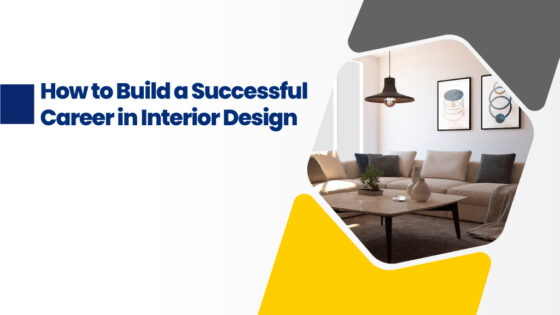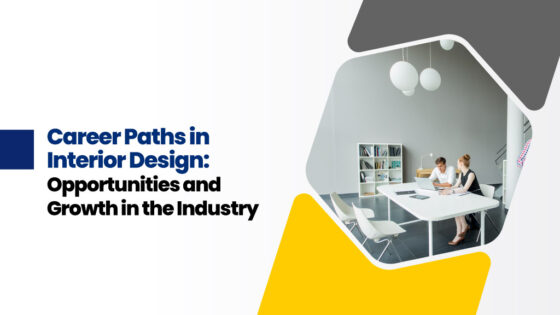Designing is not just about creating aesthetically pleasing spaces; it’s about creating environments that are comfortable for the occupants. But creating interiors for diverse settings requires a sophisticated strategy that considers a number of variables that impact the design process. Every setting, whether it’s a private residence or a hospital, has specific challenges and factors to take into consideration.
Understanding Designing in Different Contexts
The process of designing interior spaces to satisfy the unique needs and cultural norms of diverse surroundings is referred to as “designing in different contexts.”
For example, when building a residential home, it’s important to consider the residents’ interests and lifestyle to maximise their comfort. By knowing their interests, we can create a space that expresses their individuality.
Designers from the best interior design colleges in Tamil Nadu know how to modify their strategy according to the particular needs and goals of each place by considering their cultural sensitivity and financial limitations. Let’s explore the five essential factors to consider.
Purpose and Functionality
Understanding the function: The first step in every interior design project is to determine the function of the space. Is it intended for productivity or relaxation? Determining the space’s main purpose lays the groundwork for the design process.
Customising Design for Function: After the goal has been determined, it’s essential to make sure that the design improves the space’s functionality. For example, a corporate office’s design should encourage teamwork and productivity by providing spaces for meetings and individual workstations.
Example: The main goal of a restaurant’s interior design is to provide a comfortable dining environment. The design and atmosphere should align with the food and target audience, with a focus on facilitating the efficient movement of staff and clients.
Cultural and regional influences
Respect for Cultural Norms: When working in a variety of settings, interior designers need to be aware of cultural preferences and traditions. Ignoring the cultural importance of symbols and physical arrangements might result in misunderstandings.
Including Regional Aesthetics: Every region has its own customs and architectural styles. Incorporating aesthetics and cultural aspects of the area into the interior design improves authenticity and gives a feeling of togetherness among the residents.
Example: The local culture must be carefully taken into account while designing a hotel in a popular tourist destination. Incorporating elements of traditional architecture influenced by local art might result in a distinct guest experience that is aligned with the destination’s identity.
User Demographics and Preferences
Understanding the Target Audience: Interior designers need to modify their concepts to fit the intended users’ preferences and demographics. Design decisions and layouts of spaces are influenced by a variety of factors, including lifestyle and personal preferences.
Flexibility and Adaptability: Creating a layout and furniture that are both flexible and adaptable is typically necessary when designing for a wide range of user groups. Spaces should be easily modified over time to meet evolving demands and preferences.
Example: Striking a balance between social areas and individual workspaces is necessary when designing a co-working facility for independent contractors and startups. Modular design components and adaptable furniture layouts enable customisation according to the needs of various users.
Environmental Considerations
Sustainable Design Practices: As environmental issues gain more attention, interior designers are progressively implementing sustainable design principles into their work. This involves putting in place energy-efficient technologies and utilising eco-friendly materials.
Indoor Air Quality and Well-Being: The health and well-being of residents are greatly influenced by interior settings. An environment that is healthier and more productive can be achieved by designing for the best possible indoor air quality and thermal comfort.
Example: Including healing gardens and emphasising natural light in a healthcare facility’s design can aid in patients’ recovery and general well-being. Additionally, improving indoor air quality and lowering indoor air pollution can be achieved by using low-volatile organic compound paints and materials.
Resources and Budget
Aligning Design with Financial Constraints: Interior designers have to create aesthetically beautiful and useful places while staying within budgetary limits. This requires meticulous planning and resource management.
Value engineering: Value engineering is the process of identifying economical solutions without sacrificing design integrity. This might involve researching alternative building techniques or refurbishing old furniture.
Example: Strategic resource allocation is necessary when designing a retail space on a limited budget. Choosing cost-effective yet durable materials for fixtures and displays will help you create an impactful retail environment while staying within budget.
A comprehensive strategy that considers this range of factors is necessary for interior design in multiple contexts. Joining a B. Des Interior Design College in Coimbatore can help you learn these techniques and gain practical knowledge about designing in different contexts. So, with this knowledge, interior designers may build places that are aesthetically pleasing and cosy. The requirements and preferences of the residents are carefully taken into account to make these variables and customise the design to fit the particular situation. Spaces can be changed into settings that improve well-being and enrich the human experience with careful design.
Achieving the balance between aesthetics and practicality while respecting each space’s unique characteristics is essential for interior design success in diverse contexts.






